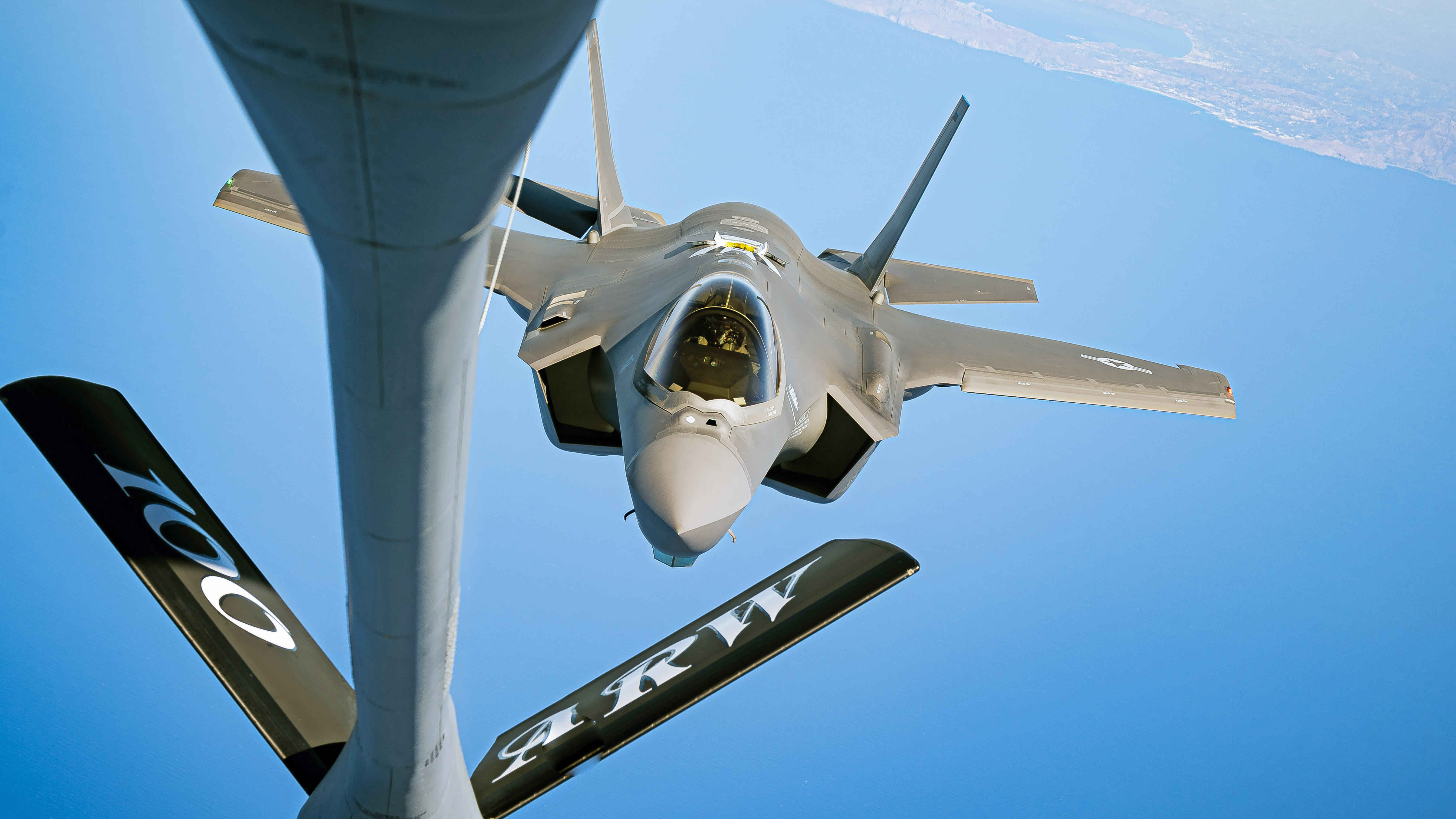As the conflict between Israel and Iran continues, the U.S. Air Force is now in the process of deploying fighters to bases within the Middle East. The fighter movements follow the arrival in Europe of more than two-dozen U.S. Air Force KC-135R and KC-46A tankers that flew across from the United States in recent days, as you can read about here.
Three unnamed U.S. officials confirmed to Reuters that the United States was deploying more fighters to the Middle East and extending the deployment of other warplanes already in the region. One of the officials said the deployments include F-16, F-22, and F-35 aircraft.
Today, flight-tracking software revealed at least 17 U.S. Air Force tankers heading south from bases in Europe, indicating that they are ‘dragging’ fighters to the Middle East. This was backed up by eyewitness sightings as well as air traffic control communications. As it stands today, at least 31 tankers have been noted heading across the Atlantic, based on publicly available flight-tracking data.
Previously, U.S. Secretary of Defense Pete Hegseth wrote on X that he “directed the deployment of additional capabilities to the United States Central Command Area of Responsibility.”
“Protecting U.S. forces is our top priority, and these deployments are intended to enhance our defensive posture in the region,” Hegseth added.
Since Hegseth’s comments yesterday, additional tankers have been noted on flight-tracking software leaving bases in the United States. These aircraft have been flying with “GOLD” callsigns, typically used for Coronet flights that deploy fighters across the Atlantic or Pacific.
There are indications that F-22s may be coming to the Middle East from Langley Air Force Base in Virginia, while F-35s are likely drawn from either the Vermont Air National Guard — as suggested by tanker tacks in the vicinity — and/or RAF Lakenheath in England.
Instagram user g.lockaviation provided TWZ with photographs that show F-35s from Lakenheath heading south over the United Kingdom today, toward the Middle East. The stealth fighters were split into three flights of four, each supported by a KC-135 tanker, reportedly flying from RAF Mildenhall in England and Morón Air Base in Spain.



As for the F-16s mentioned by one U.S. official, these may well involve the jets at Aviano Air Base in Italy. Reports of movements of some of these F-16s emerged today, based on sightings and air traffic control communications.
When U.S. Air Force tankers began their migration across the Atlantic, we noted that one of the possible reasons was to prepare for the influx of additional major assets into the region, and especially fighters. At this point, this is very likely being done for contingency needs and to give the president multiple options, as we outlined in our previous feature on the tanker movements. Any involvement in the kinetic conflict remains pre-decisional, at least publicly. However, having all these assets in the region would allow the United States to respond in force if Iran attacks U.S. interests or if the administration decides to get involved directly.
At the same time, the Air Force can use these fighters for shooting down drones and cruise missiles, something they have been doing in this theater for months now. In particular, the F-16s reportedly now being deployed to the Middle East have already been using APKWS IIs to down drones launched by Iranian-backed Houthi militants in Yemen since last year, which we were the first to report.

Air Force F-15E Strike Eagles played key roles in defending Israel from incoming missile and drone attacks last year. F-15Es recently saw their counter-drone capabilities, in particular, significantly expand through the addition of laser-guided Advanced Precision Kill Weapon System II (APKWS II) rockets to their available arsenal. Air Force F-16s in the Middle East had already been using APKWS IIs to down drones launched by Iranian-backed Houthi militants in Yemen since last year, which we were first to report.
The movement of such large numbers of tankers could also indicate support for global airpower bomber missions from the United States to Iran and back, although there has been no sign of Air Force Global Strike Command involvement so far. As of today, Planet Labs satellite imagery reviewed by TWZ revealed that four B-52s and six F-15Es, plus other aircraft, were still at Diego Garcia in the Indian Ocean.
There has been speculation that the U.S. Air Force could use B-2 stealth bombers to assist Israel in its attacks on Iran’s nuclear facilities. In particular, the deep-lying nuclear enrichment site at Fordow could require Massive Ordnance Penetrator (MOP) bunker-buster bombs, designed to penetrate just this type of target, and only carried by the B-2.

This is a scenario that we have repeatedly highlighted and discussed for many years.
As well as the apparent deployment of U.S. Air Force fighters to the Middle East, a second aircraft carrier strike group, led by the USS Nimitz, was sent from East Asia toward the Middle East earlier this week, as you can read about in this previous article. It will join the carrier USS Carl Vinson, which is already operating relatively close to Iran, around the Arabian Sea. Already, U.S. Navy warships in the region are understood to have been helping shoot down Iranian ballistic missiles headed toward Israel. This is in addition to the U.S. Army Patriot surface-to-air missile systems and Terminal High Altitude Area Defense (THAAD) ballistic missile defense systems that have been helping defend Israel, too.
This is a fast-developing story, and we will bring more updates when we have information about these highly unusual aircraft movements.
Contact the author: thomas@thewarzone.com
